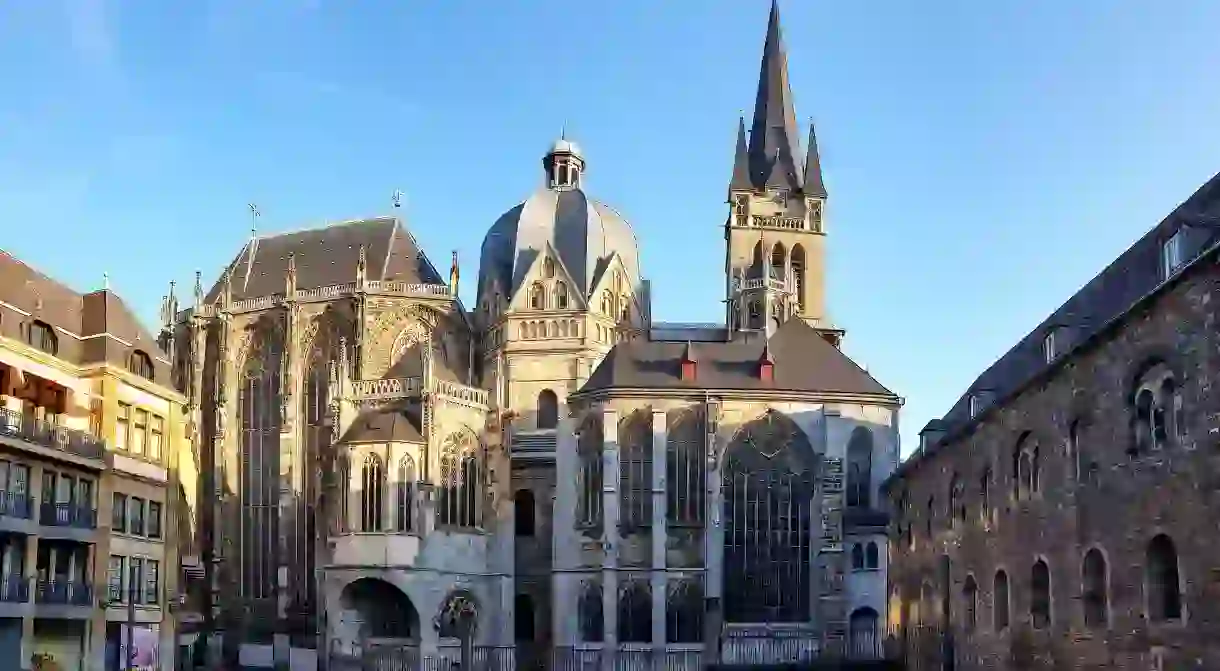Breathtakingly Beautiful Buildings in Germany

Germany is often sought out by travellers for its famous Christmas markets, stunning landscapes or the music scenes in Berlin or Frankfurt. But it also has plenty of awe-inspiring buildings that have earned UNESCO World Heritage status and are worth a trip alone, as they offer a deep dive into the country’s history and architecture. Here are some of the sites you won’t want to miss.
Looking to see the best attractions in Germany? Check out some of our own trips!

Cologne Cathedral
Cathedral
Aachen Cathedral
Cathedral, Church

Würzburg Residence
Architectural Landmark

Castles of Augustusburg and Falkenlust at Brühl UNESCO
Building

Among the earliest examples of 18th-century Rococo architecture in the country, the Castles of Augustusburg and Falkenlust in Brühl span several buildings connected in the idyllic gardens of the Schlosspark. The sprawling gardens were designed by Dominique Gerard who was inspired by French taste, and the swirling foliage is best viewed from the palace terrace. It also doubles as a concert venue in the summertime.
Margravial Opera House
Theatre

One of the only remaining examples of a Baroque court theatre, the opulent Margravial Opera House in Bayreuth has been extensively restored. It reportedly took some 70,000 hours of work and investments of €30 million to bring it back to its former 18th-century glory and is well worth a visit to marvel at the decadent interiors, which are enchantingly over the top.
Palaces and Parks of Potsdam and Berlin
Historical Landmark

Just a short train ride from Berlin, Palaces and Parks of Potsdam and Berlin is a collection of buildings and landscaped gardens that became recognised as a symbol of unity and the diversity of European history. 150 exceptional buildings and an expanse of parks and botanical gardens created over two decades are stunning showcases of Prussian royalty, with specific care for the natural environment. Sanssouci Palace, in particular, which was created by King Frederick II in the 18th century, was hoping to rival Versailles Palace in its opulence, and it’s difficult not to absorb its lasting grandeur. Stop here for Instagrammable views and a learn a bit about Germany’s past rulers.
Naumburg Cathedral
Cathedral

Dating back to the 13th century, Naumburg Cathedral is an outstanding example of Medieval architecture and a renowned landmark of the late-Romanesque style in Germany – not to mention, a notable sacred cultural monument from the European High Middle Ages. Designed by the unknown German architect nicknamed the “Naumberg Master”, it contains a three-part crypt, a statue of St Elizabeth of Hungary and a treasury vault where you’ll find manuscripts, sculptures and altars.
The Architectural Work of Le Corbusier – Weissenhof Estate
Building

Swiss-French architect Charles-Édouard Jeanneret, widely known as Le Corbusier, was a pioneer of modern architecture. The Architectural Work of Le Corbusier is a selection of 17 buildings that represent his outstanding role in 20th-century architecture, some of which are in Germany: specifically the Villas at Weissenhof Estate and Unité d’Habitation of Berlin. The former is a striking collection of workers housing units built as part of a 1927 exhibition of Modernist housing, and it’s easy to see how the experimental design became a benchmark for urban housing across the world. The latter (also known as Corbusierhaus), is a 1958 building that serves as a colourful representation of the modernisation of Germany.
Town Hall and Roland on the Marketplace of Bremen
Architectural Landmark

Representing the development of civic autonomy and sovereignty in the Holy Roman Empire, the old town hall in Bremen and its associated statue of military leader Roland were built in the early 15th century, but later renovated in the early 17th century in Weser Renaissance style. In the 20th century, a new town hall was built next to the old one, both of which survived bombardment in World War II. The hall’s interiors are lavishly decorated, reflecting the prestigious merchants and leaders that once frequented the venue. Symbolically, the beautiful stone of Roland stands proudly outside of the town hall, to symbolise the former power and independence of the city.













